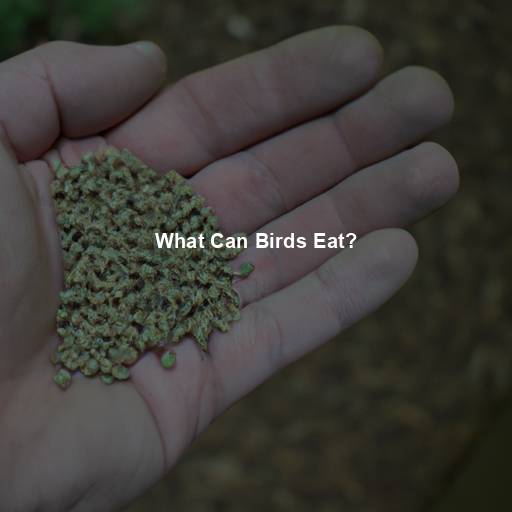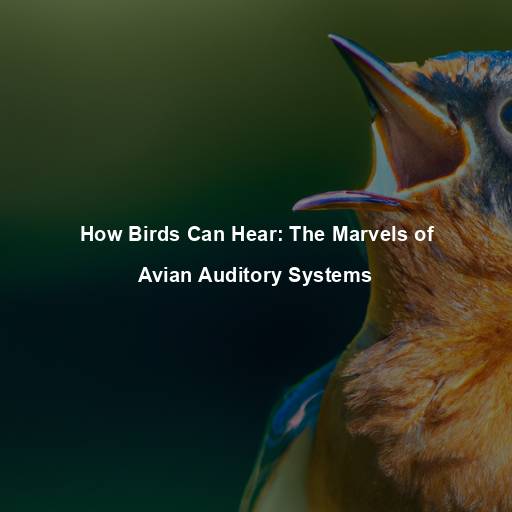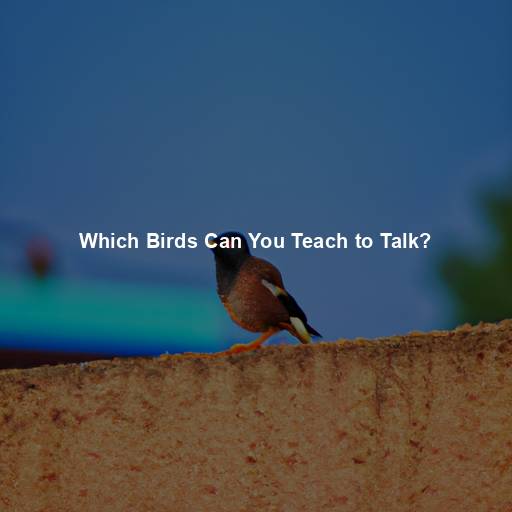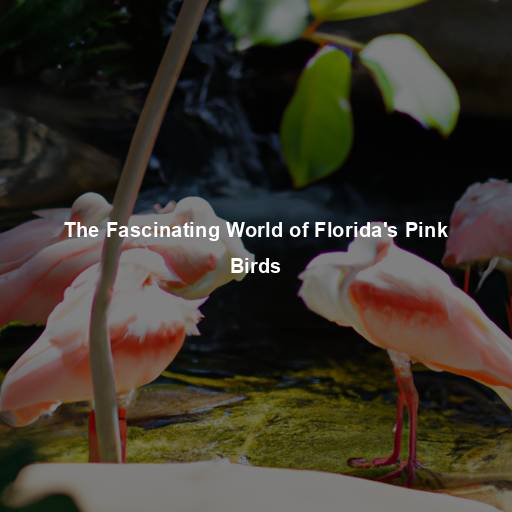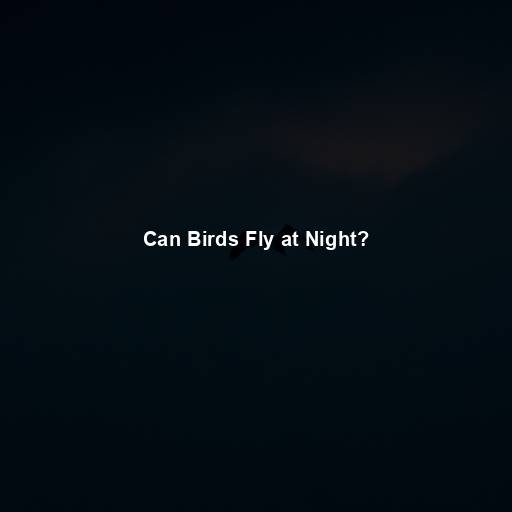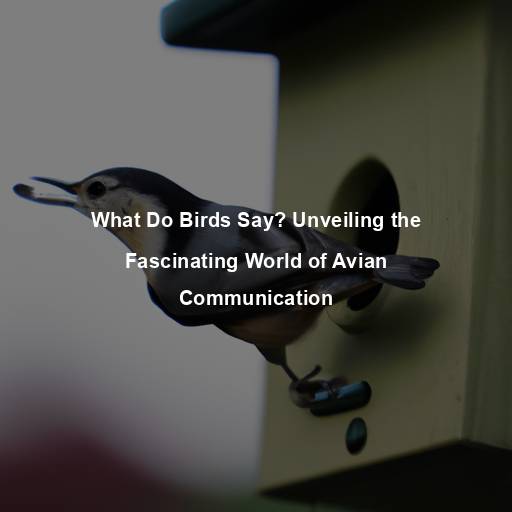What Can Birds Eat?
Last Updated on August 2, 2023 by Evan
Contents
- 1 Understanding the Dietary Needs of Our Feathered Friends
- 1.1 The Importance of a Balanced Diet
- 1.2 1. Seeds and Grains
- 1.3 2. Fruits and Berries
- 1.4 3. Insects and Mealworms
- 1.5 4. Nectar and Pollen
- 1.6 5. Vegetables and Leafy Greens
- 1.7 6. Nuts and Nut Butters
- 1.8 7. Commercial Bird Food
- 1.9 8. Water – A Vital Requirement
- 1.10 A Word of Caution
- 1.11 Hummingbirds: Nature’s Nectar Lovers
- 1.12 Woodpeckers: Masters of Insects and Nuts
- 1.13 Finches: Seed Connoisseurs
- 1.14 Orioles: Fruits and Nectar Aficionados
- 1.15 Sparrows: Versatile Eaters
- 1.16 Waterfowl: Grazers and Dabblers
- 1.17 Birds of Prey: Carnivorous Hunters
- 1.18 Wild Birds: Adapting to Nature’s Bounty
- 2 Ensuring a Safe and Healthy Feeding Environment
- 3 The Joy of Bird Watching and Conservation
- 4 FAQs: What Can Birds Eat
Understanding the Dietary Needs of Our Feathered Friends
Birds have an inexplicable allure that has captured the hearts of many, leaving us in awe of their mesmerizing aesthetics, elegant movements, and captivating melodies. Whether you’re a proud guardian of a feathered companion or find solace in observing birds in their natural habitat, it is crucial to gain insight into their dietary requirements to ensure their sustenance and contentment. Brace yourself for an enlightening journey as we embark on a voyage through the vast gastronomic preferences of avian creatures, ranging from the consumption of seeds and luscious fruits to the indulgence in insects and sweet nectar. Get ready to unlock the secrets of avian nutrition and discover the key to fostering a thriving existence for our beloved winged friends.
The Importance of a Balanced Diet
Just like us, our avian companions need a diverse array of nutrients to thrive. Offering a comprehensive diet helps them fuel their growth, vitality, and overall well-being. It’s crucial to understand that different bird species have distinct nutritional needs, which makes providing a wide range of foods essential. So, let’s delve into the fascinating world of avian cuisine and discover the nourishing delicacies that can support our feathered friends’ health.
1. Seeds and Grains
Seeds and grains are staple foods for many bird species. They are rich in carbohydrates, proteins, and fats, providing a good source of energy. Offering a mix of sunflower seeds, millet, oats, and cracked corn can attract a wide variety of birds to your backyard. You can provide these foods in bird feeders or scatter them on the ground.
2. Fruits and Berries
There’s something truly enchanting about the vibrant world of fruits and berries that goes beyond their delectable flavors. Bursting with an arsenal of essential vitamins and antioxidants, they hold the power to dazzle both our taste buds and our well-being. Imagine for a moment the graceful thrushes, the whimsical waxwings, and the marvelous orioles, with their singular affinity for these succulent treasures. Whether it’s the crisp crunch of apples, the zesty burst of oranges, the luscious juiciness of grapes, or the delightful sweetness of blueberries and strawberries, these feathery connoisseurs know just what’s good for their diet.
3. Insects and Mealworms
Bird enthusiasts know that insects and mealworms are a powerhouse of protein, offering a much-needed energy boost to our feathered friends, especially when they’re in the midst of breeding seasons. To lure insect-loving birds like the charming robins, warblers, and flycatchers into your backyard, try tempting them with either live or dried mealworms. Another clever way to create a natural dining experience for these avian connoisseurs is by dedicating a cozy corner of your garden to native plants that attract a glorious array of insects, forming an irresistible buffet in the eyes of our fine-feathered companions.
4. Nectar and Pollen
Did you know that hummingbirds and certain sunbirds have a rather peculiar taste in food? Their diet consists solely of nectar and pollen, which they extract with their fascinating long beaks. To catch their attention, why not try hanging up some hummingbird feeders filled with a delightful concoction of sugar and water? Just be sure to steer clear of any artificial dyes or sweeteners, as these can pose a serious threat to these delicate creatures.
5. Vegetables and Leafy Greens
Birds, fascinating creatures of the sky, surprise us yet again with their diverse dietary preferences. Though seeds and fruits are their staple, it may astound you to know that certain avian species also delight in the vibrant flavors of vegetables and leafy greens. Leafy powerhouses like spinach, kale, and lettuce boast a cornucopia of essential nutrients, making them an enticing addition to the diets of delightful birds such as finches, canaries, and parakeets. Get creative by finely chopping these verdant gems and incorporating them into culinary concoctions or suspend them as delectable surprises within their ornate cages.
6. Nuts and Nut Butters
Nuts and nut butters, such as peanuts and almond butter, are high in healthy fats and proteins. Many birds, including woodpeckers, jays, and nuthatches, love to feast on these energy-rich foods. It’s important to offer unsalted and unflavored nuts to birds, as salt and certain flavorings can be harmful to them.
7. Commercial Bird Food
Commercial bird food, such as pellets and seed mixes specifically formulated for birds, can be a convenient option for pet bird owners. These products are designed to provide a balanced diet and often contain a variety of seeds, grains, fruits, and vegetables. However, it’s important to supplement their diet with fresh foods to ensure optimum nutrition.
8. Water – A Vital Requirement
When it comes to our feathered friends, nourishment isn’t their only craving – water is just as vital. Ensuring a pristine and invigorating water source becomes a paramount necessity, particularly amid scorching summer heatwaves or bone-chilling winter frosts. Opting for bird baths, charming fountains, or even shallow dishes brimming with crystal-clear water entices avian visitors to your haven, offering them life-sustaining hydration amidst their perplexing journeys.
A Word of Caution
While it’s exciting to feed and interact with birds, it’s essential to do so responsibly. Here are a few precautions to keep in mind:
When it comes to our avian friends, caution should be exercised in the culinary department. It’s imperative to refrain from offering our feathered companions any victuals that exhibit the grotesque attributes of mold or spoilage. These unsavory substances can wreak havoc on their delicate constitutions, posing a serious threat to their overall well-being.
– Refrain from offering foods that are high in salt, sugar, or artificial additives.
– Keep bird feeders and feeding areas clean to prevent the spread of diseases.
Help our feathered friends thrive in their natural habitat by strategically positioning bird feeders and soothing bird baths at a safe distance from windows, ensuring they won’t accidentally collide and find themselves perplexed by the glass barrier. By creating a harmonious environment for these beautiful creatures, we can embrace the burst of life they bring with their vibrant colors and melodious songs without causing them any harm. So, let’s relocate these feeding stations and water sources to give our avian companions the freedom they deserve.
– Be mindful of potential predators and take necessary precautions to protect the birds.
Hummingbirds: Nature’s Nectar Lovers
In the enchanting world of nature, few creatures capture our attention quite like hummingbirds. Their captivating ability to suspend themselves mid-air, paired with their dependence on the sweet nectar of flowers as their sustenance, makes them true aerial marvels. To beckon these vibrant wonders into your own backyard oasis, it is essential to offer them a reliable source of nourishing nectar through thoughtfully crafted feeders designed specifically for their delicate needs. Crafting your own nectar by blending four parts water with one part white granulated sugar is a simple yet effective way to enthrall these petite aviators.
Woodpeckers: Masters of Insects and Nuts
Woodpeckers, those captivating creatures of the avian world, display a remarkable skill in their quest for sustenance. With a flurry of activity, they embark on a delightful journey, seeking a combination of insects, nuts, and seeds to fuel their energy levels. Utilizing their powerful beaks as both a drumming instrument and a tool for excavating hidden treasures beneath the tree bark, these feathered foragers truly captivate our imagination.
If you desire the melodious company of these magnificent woodpeckers in your own backyard, there are a few enticing methods to consider. One such method is the offering of suet cakes—an enticing and high-energy concoction of animal fat and seeds that is sure to catch the eye and taste buds of these distinguished guests. Furthermore, consider diversifying your offerings by providing a delectable assortment of nuts, such as peanuts, almonds, or walnuts, presenting an irresistible feast that will undoubtedly lure these enigmatic fliers for repeat visits.
In the enchanting world of nature, where unpredictability and marvel reign supreme, witnessing the arrival of a woodpecker can fill one’s heart with a burst of joy and wonderment. So, go forth, dear reader, and create an oasis of temptation in your yard, beckoning these exquisite creatures to grace your presence with their captivating presence.
Finches: Seed Connoisseurs
Step into the captivating world of finches, those enigmatic birds known for their mesmerizing rainbow-like plumage and unwavering love affair with seeds. These petite creatures, armed with their extraordinary beaks, have mastered the art of extracting the essence of life from a diverse array of plants. To entice the charming goldfinches and house finches to grace your backyard, provide them with a delectable feast comprising a tantalizing medley of nyjer (thistle) seeds, nutrient-rich sunflower seeds, and the timeless classic, millet. It’s crucial to curate this gastronomic delight with utmost care, ensuring that the seeds are fresher than the morning dew to shield our feathered friends from any moldy misfortunes.
Orioles: Fruits and Nectar Aficionados
Orioles are strikingly beautiful birds with a penchant for sweet treats. They have a preference for fruits, nectar, and insects. To entice orioles to your garden, provide orange halves or hang specialized oriole feeders filled with nectar made from a mixture of water and sugar. You can also offer grape jelly, which is a favorite food of these delightful birds.
Sparrows: Versatile Eaters
Sparrows are highly adaptable birds that can thrive on a variety of food sources. They consume a mix of seeds, grains, insects, and even scraps of human food. Providing a diverse range of food options, such as millet, sunflower seeds, and mealworms, can attract sparrows to your backyard. They are also known to scavenge for fallen grains or crumbs, so keeping the area beneath your bird feeders clean can provide an additional source of sustenance for these resourceful birds.
Waterfowl: Grazers and Dabblers
Waterfowl, including ducks and geese, have unique dietary habits as they are adapted to both land and water environments. These birds are typically grazers and dabblers, meaning they feed on a variety of grasses, aquatic plants, insects, and small aquatic creatures. If you have a pond or live near a water source, you can attract waterfowl by planting water-loving vegetation and providing floating duck pellets or cracked corn. Remember to follow local regulations regarding feeding waterfowl, as excessive feeding can disrupt their natural foraging behaviors.
Birds of Prey: Carnivorous Hunters
Birds of prey, such as hawks, eagles, and owls, have specialized diets consisting mainly of small mammals, birds, reptiles, and amphibians. These majestic hunters rely on their sharp talons and beaks to catch and devour their prey. While it may not be practical or ethical to provide live prey for these birds, you can help attract them to your area by creating a suitable habitat. Providing perching spots like tall trees or posts, and preserving open spaces for hunting, can make your property more appealing to these awe-inspiring creatures.
Wild Birds: Adapting to Nature’s Bounty
Birds are nature’s curious creatures, continuously evolving and adapting to survive in their unique habitats. Their diets, as diverse as their feathers, consist of a culinary dance between seeds, fruits, insects, and countless other delectables found in the wilderness. To bring these enchanting creatures closer to your doorstep, consider transforming your backyard into a natural haven. By cultivating an array of native plants, colorful flowers, and indigenous shrubs, you can build a captivating landscape that emulates their wild surroundings.
Ensuring a Safe and Healthy Feeding Environment
As we embark on the delightful endeavor of feeding our feathered friends, we must also be guardians of their safety and stewards of the intricate web of wildlife that surrounds us. In this pursuit, here are some vital nuggets of wisdom to ponder:
Avoid Overfeeding and Dependency
Feeding our feathered friends is undoubtedly a delightful act, but there lies a hidden conundrum. A precarious dependence on man-made sustenance is the lurking threat that we must address. Achieving equilibrium between the amiable gesture of supplemental feeding and preserving their innate foraging instincts is tantamount. Such a harmonious coexistence empowers our avian companions to hone their natural skills and revel in a varied and nutritious diet.
Keep Feeders Clean
Regularly cleaning bird feeders and baths is essential to prevent the growth of harmful bacteria or mold. Wash feeders with warm soapy water, rinse thoroughly, and allow them to dry before refilling. Providing fresh food and clean water contributes to the overall health of the birds that visit your yard.
Minimize Risks of Window Collisions
Birds often collide with windows, mistaking reflections for open spaces. To minimize the risk of collisions, consider using window decals or decorative films that make the glass more visible to birds. Placing feeders and baths either within three feet of the window or more than 30 feet away can also help reduce collisions.
Be Mindful of Predators
Creating an enchanting bird haven in your backyard might unlock a whimsical world of fluttering wonders, but beware! Like cunning chameleons in disguise, sly predators stealthily lurk in the shadows. Craft your feeder location wisely, emboldening the avian realm while cunningly outsmarting feline fiends, raccoon rogues, and squirrel scamps. Remember, harmony lies in balancing the feathered delights with the intricate tapestry of the wild.
The Joy of Bird Watching and Conservation
There is something truly magical about feeding birds, isn’t it? Not only does it give them a sense of security with a steady food supply, but it also opens up our eyes to the sheer wonder of their captivating beauty and intriguing behavior. Bird watching, a beloved pastime for many nature enthusiasts, serves as a splendid bridge between people and the wild, instilling a deep respect for conservation. By embracing our feathered friends and learning about their unique dietary needs, we can nurture an environment that promotes the preservation of these extraordinary creatures right in our own backyards, thus embracing the beauty of biodiversity.
Whether you’re a seasoned bird lover or new to the world of our feathered friends, embrace the mesmerizing moments of watching them delicately feast on their favored nourishment. Expand your knowledge on diverse bird species and create a haven that invites these beautiful creatures into your space. Let us revel in the wondrous presence of birds, while nurturing a profound bond with the captivating wonders of nature.
FAQs: What Can Birds Eat
What can birds eat?
Birds, these intriguing creatures, have the most peculiar eating habits that leave us in awe. From seeds to fruits, insects to small invertebrates, their diet is diverse and captivating. You see, each species of bird has its own distinctive palate and nutritional needs. Take, for instance, the finches and sparrows, who have a profound affinity for seeds, while hummingbirds, oh, those elegant beings, sustain themselves with nothing but nectar. However, dear readers, it is important to tread carefully when sharing our human food with these feathered friends, as not all edibles agree with their delicate systems. To ensure their thriving, we must offer them specialized bird foods that cater to their unique requirements, nurturing their health and overall well-being.
Can birds eat fruits and vegetables?
Yes, birds can eat a wide range of fruits and vegetables. Apples, berries, bananas, oranges, grapes, and melons are popular choices for many bird species. Additionally, leafy greens like spinach and kale, as well as vegetables like carrots and peas, can be offered to birds. It is best to provide them with small, bite-sized pieces to make eating easier. However, avoid feeding birds any fruits or vegetables that are spoiled, moldy, or treated with pesticides, as these can be harmful to them.
Can birds eat bread?
Birds and bread: a perplexing relationship. While it’s true that our feathered friends may indulge in the occasional breadcrumb, the reality is that bread falls far short of providing the nutrients they need to thrive. These carb-loaded treats can deceive avian appetites, filling their bellies without offering the essential sustenance required for optimal health. In fact, overindulgence in bread can lead to a feathered weight crisis, potentially paving the way for a host of avian health issues. To truly nourish our avian companions, it’s best to provide them with a varied diet rich in their natural sources of sustenance: vibrant seeds, succulent fruits, and delectable insects.
Are there any foods that birds should avoid?
While it may be tempting to share our favorite human treats with our feathered friends, it’s important to recognize that birds have a unique set of dietary needs. With their distinct digestive systems and metabolic rates, certain foods can pose a serious threat to their health. To ensure the well-being of our avian companions, it is crucial to steer clear of feeding them avocados, onions, garlic, chocolate, coffee, alcohol, salty or sugary snacks, and anything containing artificial sweeteners. These seemingly innocuous items can pack a toxic punch and, at worst, prove fatal. Moreover, it is essential to be mindful of the food quality provided to birds, steering clear of mold, bacteria, and harmful pesticides that can stealthily sabotage their health.
Can birds drink milk?
Contrary to popular belief, milk should be off-limits for our feathered friends. While it may seem like a generous gesture, pumping birds with milk can actually throw their delicate digestive systems into a tizzy. Lacking the necessary lactose-digesting enzymes, our avian companions are left in a bewildered state, battling tummy troubles and liquid lamentations. Instead, let us quench their thirst with the pure nectar of life: clean, fresh water that fuels their flight and keeps their plumage pristine. By doing so, we embark on a journey to ensure their health and happiness unfold harmoniously.
How can I attract specific birds to my yard?
To attract specific bird species to your yard, it is helpful to provide the types of foods they favor. Research the dietary preferences of the particular bird species you would like to attract, and offer appropriate bird feeders, birdhouses, or food sources. For example, if you want to attract hummingbirds, providing a nectar feeder with a sugar-water solution can be effective. Similarly, hanging feeders filled with appropriate birdseed can attract a variety of seed-eating birds. Additionally, creating a bird-friendly habitat with trees, shrubs, water features, and native plants will provide birds with a welcoming environment.

